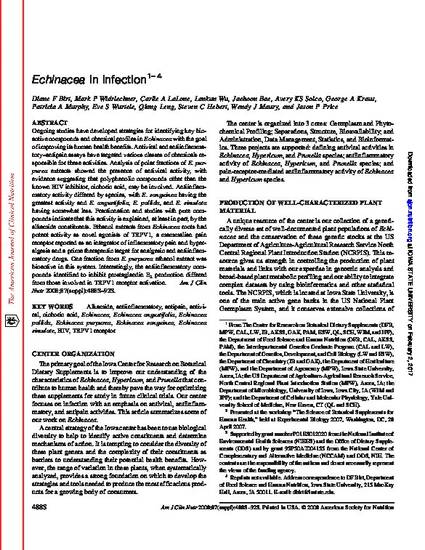
Ongoing studies have developed strategies for identifying key bioactive compounds and chemical profiles in Echinacea with the goal of improving its human health benefits. Antiviral and antiinflammatory–antipain assays have targeted various classes of chemicals responsible for these activities. Analysis of polar fractions of E. purpurea extracts showed the presence of antiviral activity, with evidence suggesting that polyphenolic compounds other than the known HIV inhibitor, cichoric acid, may be involved. Antiinflammatory activity differed by species, with E. sanguinea having the greatest activity and E. angustifolia, E. pallida, and E. simulata having somewhat less. Fractionation and studies with pure compounds indicate that this activity is explained, at least in part, by the alkamide constituents. Ethanol extracts from Echinacea roots had potent activity as novel agonists of TRPV1, a mammalian pain receptor reported as an integrator of inflammatory pain and hyperalgesia and a prime therapeutic target for analgesic and antiinflammatory drugs. One fraction from E. purpurea ethanol extract was bioactive in this system. Interestingly, the antiinflammatory compounds identified to inhibit prostaglandin E2 production differed from those involved in TRPV1 receptor activation.
Available at: http://works.bepress.com/mark_widrlechner/73/

This article is from The American Journal of Clinical Nutrition 87 (2008): 488S.